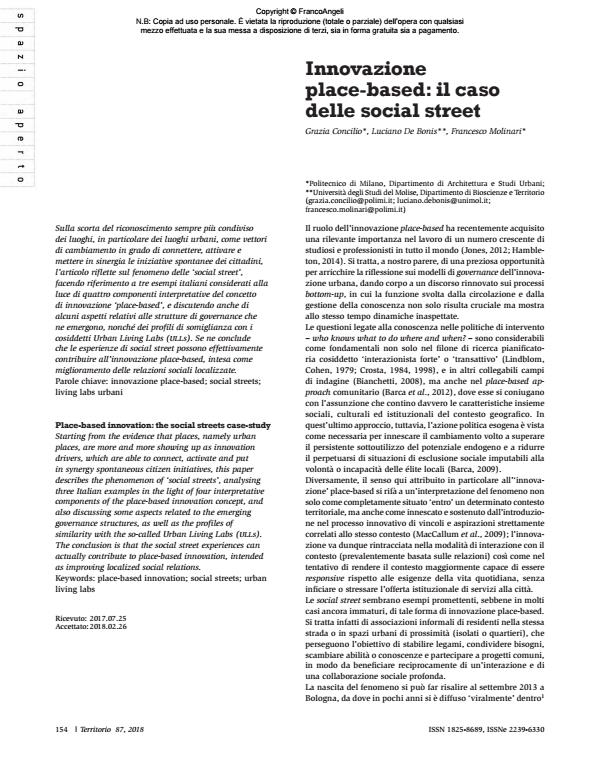Place-based innovation: the social streets case-study
Journal title TERRITORIO
Author/s Grazia Concilio, Luciano De Bonis, Francesco Molinari
Publishing Year 2019 Issue 2018/87
Language Italian Pages 8 P. 154-161 File size 229 KB
DOI 10.3280/TR2018-087022
DOI is like a bar code for intellectual property: to have more infomation
click here
Below, you can see the article first page
If you want to buy this article in PDF format, you can do it, following the instructions to buy download credits

FrancoAngeli is member of Publishers International Linking Association, Inc (PILA), a not-for-profit association which run the CrossRef service enabling links to and from online scholarly content.
Starting from the evidence that places, namely urban places, are more and more showing up as innovation drivers, which are able to connect, activate and put in synergy spontaneous citizen initiatives, this paper describes the phenomenon of ‘social streets’, analysing three Italian examples in the light of four interpretative components of the place-based innovation concept, and also discussing some aspects related to the emerging governance structures, as well as the profiles of similarity with the so-called Urban Living Labs (ulls). The conclusion is that the social street experiences can actually contribute to place-based innovation, intended as improving localized social relations.
Keywords: Place-based innovation; social streets; urban living labs
- Le terre del sisma: dalla ricostruzione alla riabitazione Luciano De Bonis, in ECONOMIA E SOCIETÀ REGIONALE 3/2021 pp.63
DOI: 10.3280/ES2020-003005
Grazia Concilio, Luciano De Bonis, Francesco Molinari, Innovazione place-based: il caso delle social street in "TERRITORIO" 87/2018, pp 154-161, DOI: 10.3280/TR2018-087022